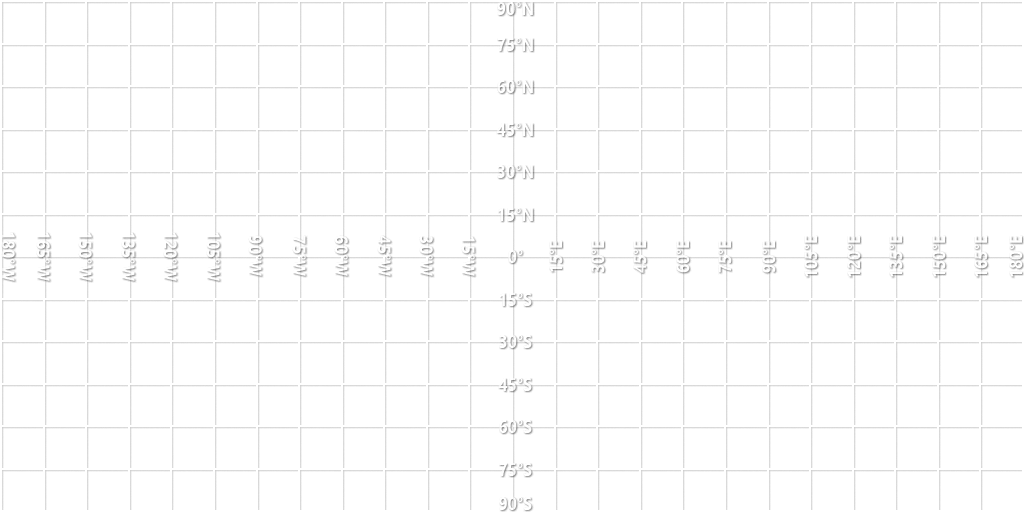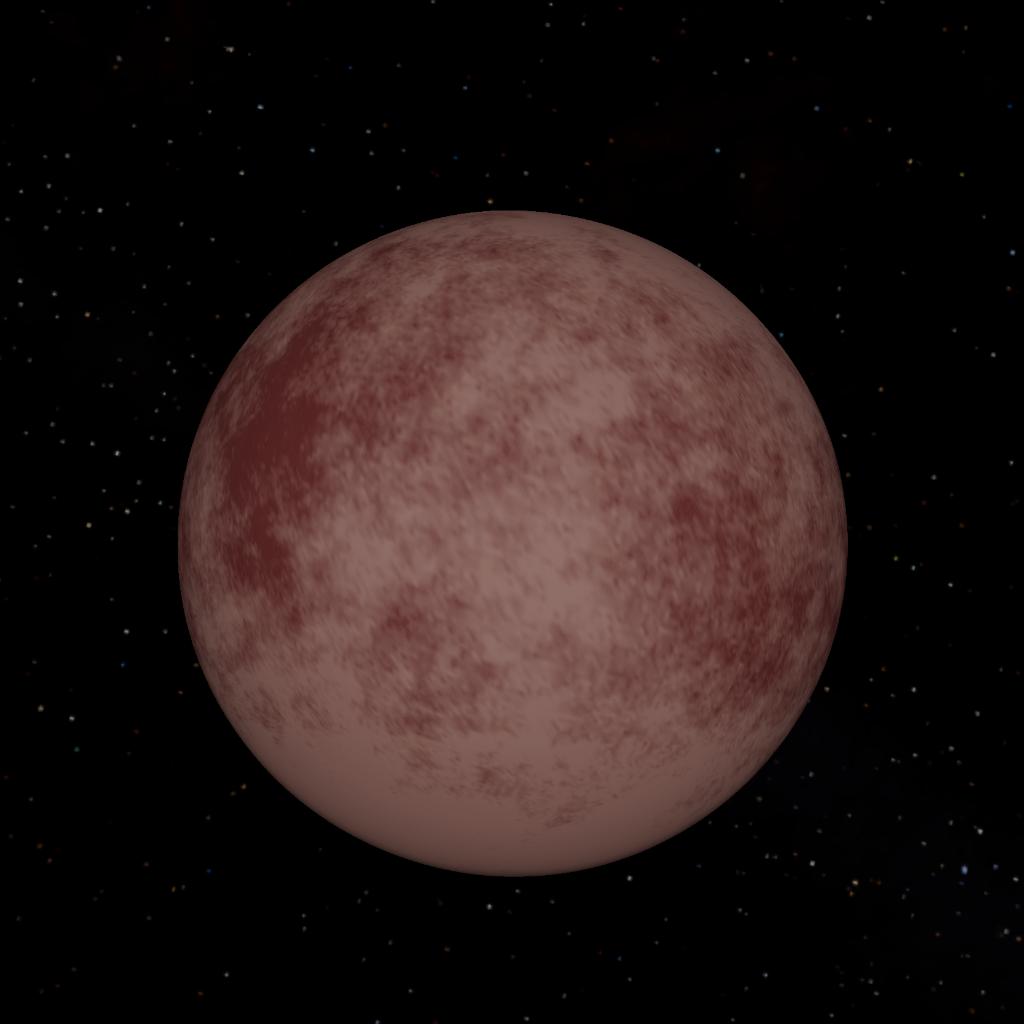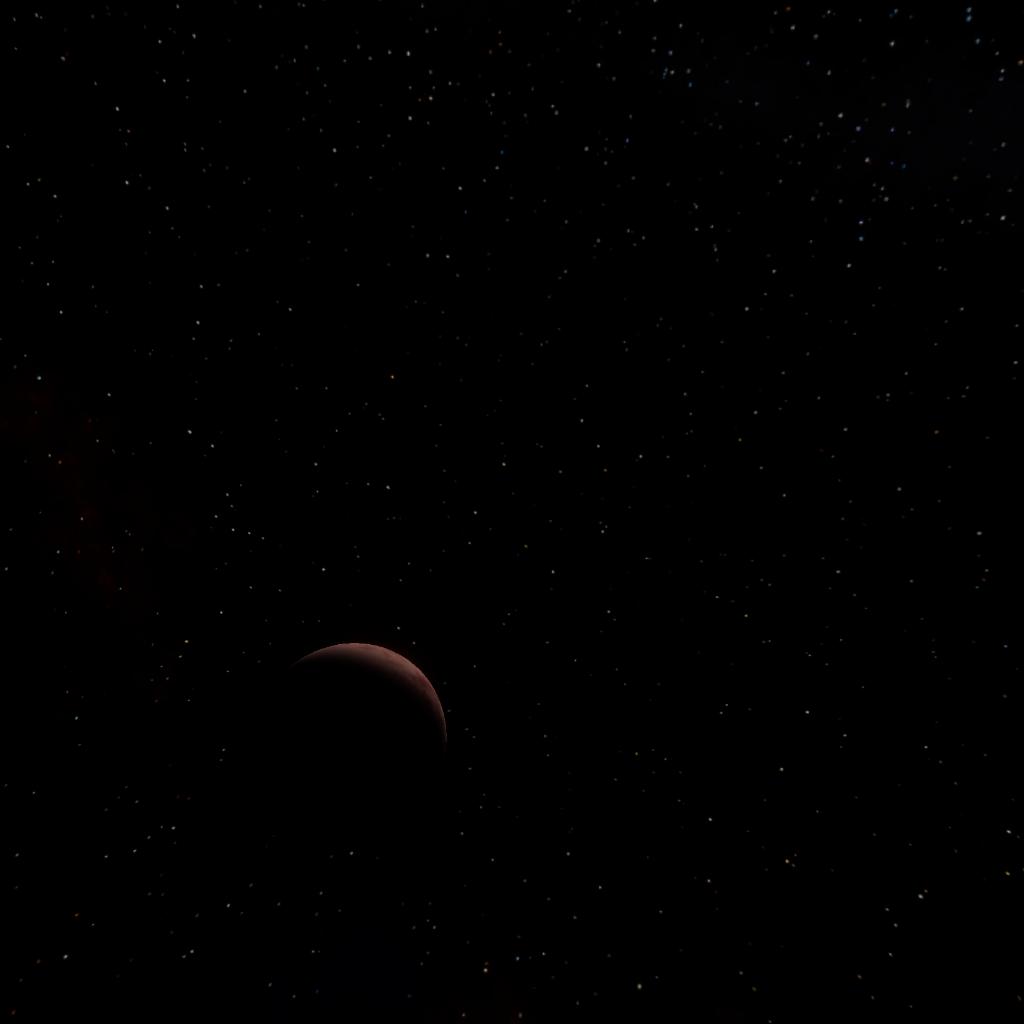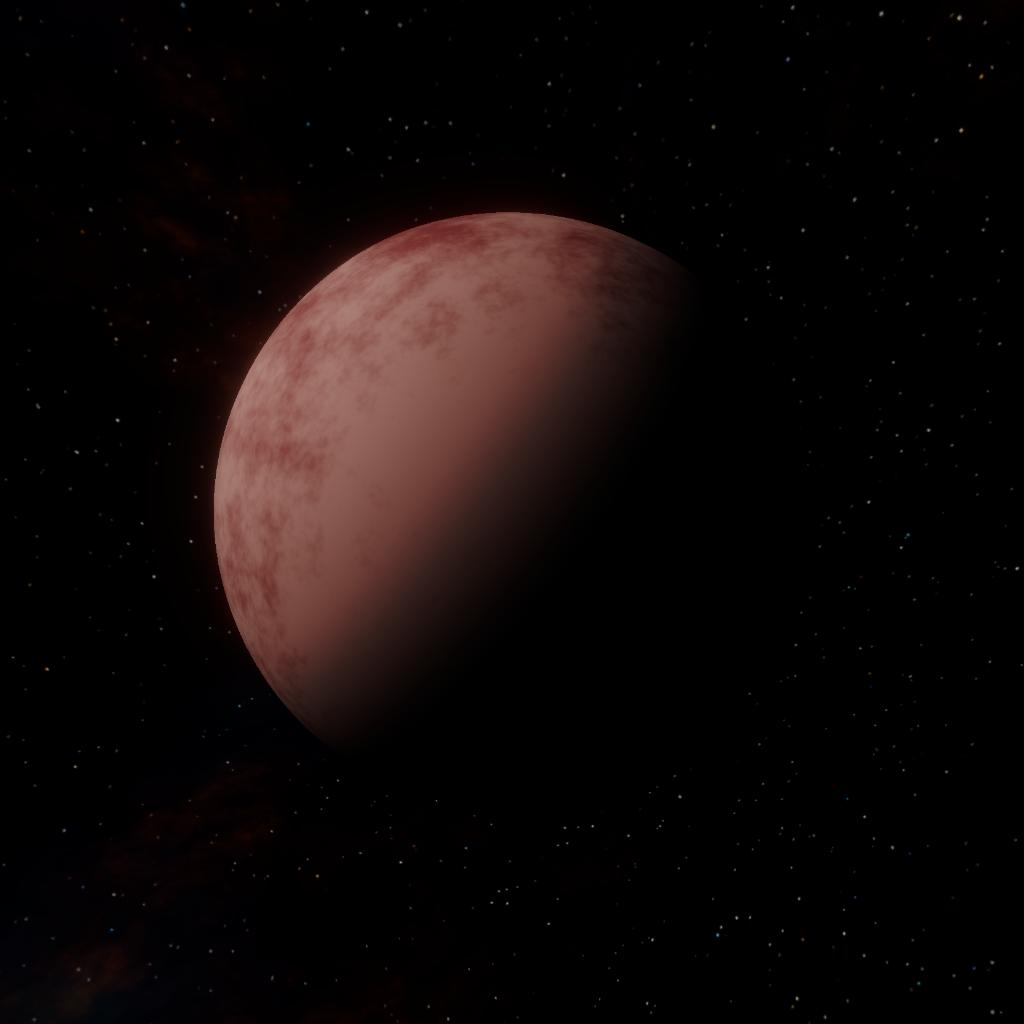Sedna (minor-planet designation: 90377 Sedna) is a dwarf planet in the outermost reaches of the Solar System, orbiting the Sun far beyond the orbit of Neptune. Discovered in 2003, the frigid planetoid is one of the reddest known among Solar System bodies. Detailed spectroscopic analysis has revealed Sedna's surface to be a mixture of the solid ices of water (H2O), carbon dioxide (CO2), and ethane (C2H6), along with occasional sedimentary deposits of methane (CH4)-derived, vividly reddish-colored organic tholins, a surface chemical makeup somewhat similar to those of other trans-Neptunian objects. Sedna has no detectable atmosphere, as its temperature is far too low for solids to volatilize. Within range of uncertainty, it is tied with the dwarf planet Ceres in the asteroid belt as the largest dwarf planet not known to have a moon. With a diameter of roughly 1,000 km, it is nearly the size of Tethys around Saturn. Owing to its lack of known moons, the Keplerian laws of planetary motion cannot be utilized for determining its mass, and the actual figure remains as yet unknown.
Sedna's orbit is one of the widest known in the Solar System. Its aphelion, the farthest point from the Sun in its orbit, is located 937 astronomical units (AU) away. This is some 19 times that of Pluto, leading to it spending most of its time well beyond the heliopause (120 AU), the boundary beyond which the influences of particles from interstellar space dominate those from the Sun. Sedna's orbit is also one of the most elliptical and narrow discovered, with an eccentricity of 0.8496. This implies that its perihelion, or point of closest approach to the Sun, at 76 AU is around 12.3 times as close as its aphelion. As of February 2025, Sedna is 83.20 AU (12.45 billion km) from the Sun, approaching perihelion at ~4.4 km/s, and 2.5 times as far away as Neptune. The dwarf planets Eris and Gonggong are presently farther away from the Sun. A transfer window for a probe fly-by in 2029 utilizing a gravitational assist from Jupiter was proposed, taking 25 years to travel to the dwarf planet, 80 AU (12 billion kilometers) distant.
GENERAL INFO
- Created On: iOS
- Game Version: 1.3.204.1
CHARACTERISTICS
- Radius: 500 km
- Sea Level: None
- Surface Gravity: 0.4 m/s
- Rotational Period: 10h
- Escape Velocity: 632.5 m/s
- Mass: 1.5E+21kg
Atmosphere
- No Atmosphere
EQUIRECTANGULAR MAP





This dwarf planet is a role model to introverts lol, jokes aside, it is redder than Mars even and hosts building blocks for life